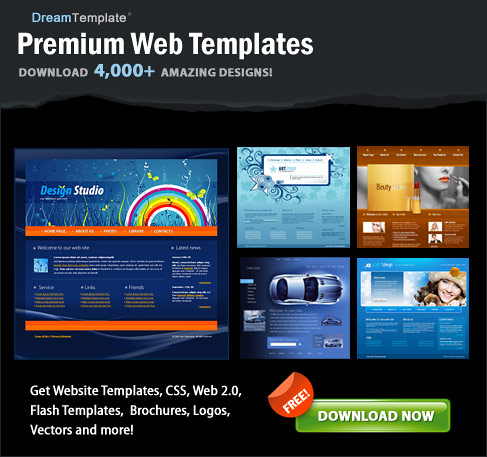HTML <a> tag
Example
A link to W3Schools.com:
|
<a href="http://www.w3schools.com">Visit W3Schools.com!</a>
|
Try it yourself! (more examples at the bottom of this page)
|
Definition and Usage
The <a> tag defines an anchor. An anchor can be used in two ways:
- To create a link to another document, by using the href attribute
- To create a bookmark inside a document, by using the name attribute
The a element is usually referred to as a link or a hyperlink.
The most important attribute of the a element is the href attribute, which
indicates the link’s destination.
By default, links will appear as follows in all browsers:
- An unvisited link is underlined and blue
- A visited link is underlined and purple
- An active link is underlined and red
Browser Support





The <a> tag is supported in all major browsers.
Differences Between HTML and XHTML
NONE
Tips and Notes
Tip: Use CSS to style links!
Optional Attributes
DTD indicates in which DTD the attribute is
allowed. S=Strict, T=Transitional, and F=Frameset.
| Attribute |
Value |
Description |
DTD |
| charset |
char_encoding |
Specifies the character encoding of the target URL |
STF |
| coords |
coordinates |
Used with the shape attribute to specify the size, shape,
and placement of a link in an object or img element |
STF |
| href |
URL |
Specifies the target URL of the link |
STF |
| hreflang |
language_code |
Specifies the language of the document in the target URL |
STF |
| name |
section_name |
Defines an anchor (use this attribute to create a bookmark in
a document) |
STF |
| rel |
alternate
stylesheet
start
next
prev
contents
index
glossary
copyright
chapter
section
subsection
appendix
help
bookmark |
Specifies the relationship between the current document and the target URL |
STF |
| rev |
alternate
stylesheet
start
next
prev
contents
index
glossary
copyright
chapter
section
subsection
appendix
help
bookmark |
Specifies the relationship between the target URL and the current document |
STF |
| shape |
rect
rectangle
circ
circle
poly
polygon |
Defines the shape of a link |
STF |
| target |
_blank
_parent
_self
_top
framename |
Specifies where to open the target URL
|
TF |
| type |
mime_type |
Specifies the MIME type of the target URL |
STF |
Standard Attributes
| id, class, title, style, dir, lang, xml:lang, tabindex, accesskey |
For a full description, go to Standard
Attributes.
Event Attributes
| onfocus, onblur, onclick, ondblclick, onmousedown, onmouseup, onmouseover, onmousemove, onmouseout, onkeypress, onkeydown,
onkeyup |
For a full description, go to Event Attributes.
Try-It-Yourself Demos
Create hyperlinks
How to create hyperlinks.
An image as a link
How to use an image as a link.
Open a link in a new browser window
How to open a link in a new browser window, so that the visitor does not have to leave your Web site.
Link to a location on the same page
How to link to a bookmark.
Break out of a frame
How to break out of a frame (if your site is locked in a frame).
Create a mailto link
How to link to a mail message (will only work if you have mail installed).
Create a mailto link 2
Another mailto link.

 |
|
Get Your Diploma!
W3Schools' Online Certification Program is the perfect solution for busy
professionals who need to balance work, family, and career building.
The HTML Certificate is for developers who want to document their knowledge of HTML, XHTML, and CSS.
The JavaScript Certificate is for developers who want to document their knowledge of JavaScript and the HTML DOM.
The XML Certificate is for developers who want to document their knowledge of XML, XML DOM and XSLT.
The ASP Certificate is for developers who want to document their knowledge of ASP, SQL, and ADO.
The PHP Certificate is for developers who want to document their knowledge of PHP and SQL (MySQL).
|
|